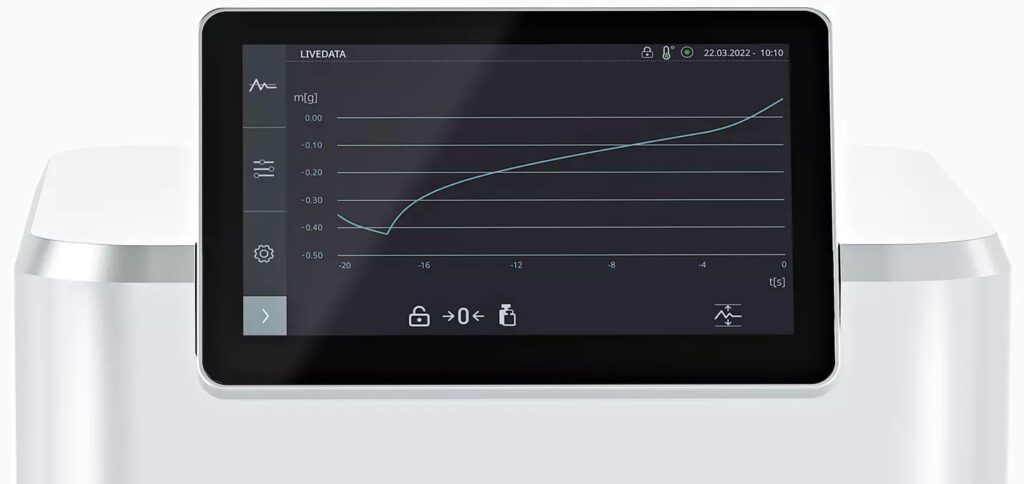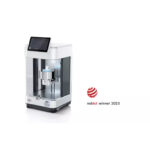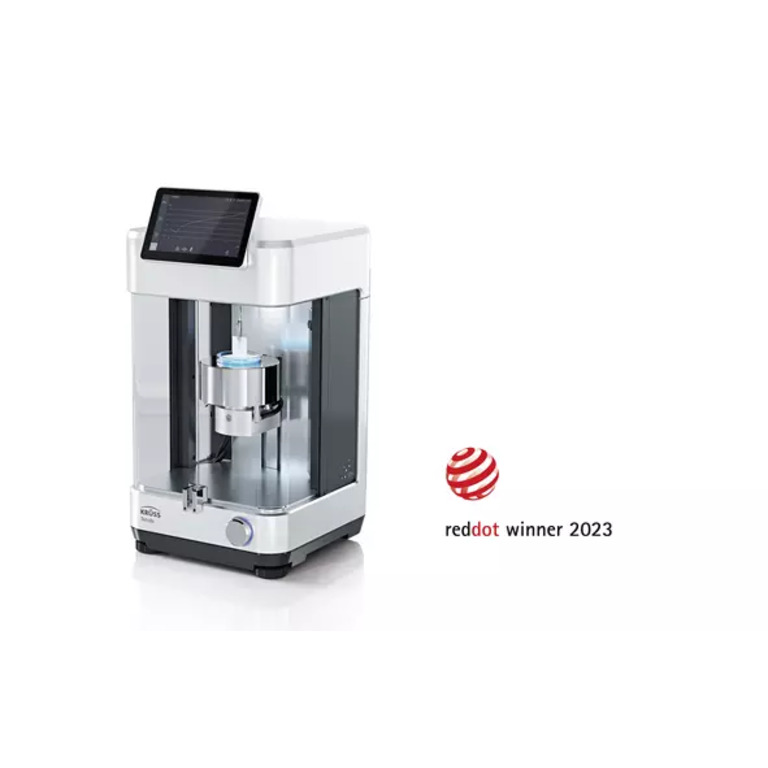Tensíío — Force Tensiometer for Liquids and Solids
The Tensíío by KRÜSS is a tensiometer designed for accurate measurement of surface tension, interfacial tension, and wettability on liquids and solids. It is based on the Wilhelmy technique and features automated data analysis, ideal for research and industrial applications.
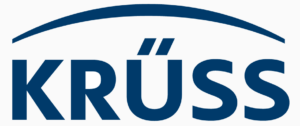
Tensíío – Force Tensiometer
The new generation tensiometer for liquid and solid surfaces
Theoretically, building a tensiometer is simple: putting a moveable sample stage underneath a force measuring device. But developing the best-in-class tensiometer is something completely different. It takes more than just using an utterly precise force sensor (which we did) and the sample positioning with the widest dynamic range (which we developed). It takes a change of perspective that focuses on the user and his task – you and your task. It takes the will to make your lab work as convenient, flexible, and time-saving as possible. We believe that Tensíío is that kind of instrument.
Applications
☑️ Surface tension and interfacial tension measurement for wetting agents, cleaning agents, emulsifiers, or other surfactants
☑️ Determination of the effectiveness and efficiency of surfactants by CMC measurement
☑️ Wetting behavior of tablets, pharmaceutical active ingredients, and excipients
☑️ Wetting of varnishes and paints
☑️ Wetting and adhesion of coatings
☑️ Development of cosmetic products
☑️ Wetting properties of inks
☑️ Wetting of fiber bundles and textiles, also for fiber-reinforced polymers
☑️ Sedimentation and ductility of dispersions
☑️ Analyzing surface modifications
☑️ Adhesion at superhydrophobic surfaces
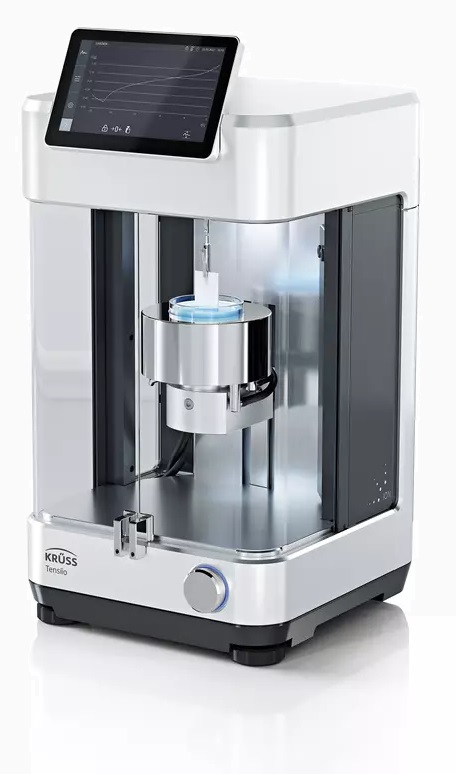
Measuring Methods
☑️ Surface tension using the tensile force of a lamella underneath a ring
☑️ Interfacial tension using the tensile force of a lamella underneath a ring
☑️ Surface tension using the tensile force of a lamella which is stretched until it disrupts
☑️ Interfacial tension using the tensile force of a lamella which is stretched until it disrupts
☑️ Automated determination of the critical micelle concentration (CMC) by measuring the surface tension at different concentrations
☑️ Surface tension using the wetting force of a liquid at a platinum plate or rod
☑️ Interfacial tension using the wetting force of a liquid at a platinum plate or rod
☑️ Contact angle using the wetting force of a liquid at a solid sample
☑️ Contact angle between a liquid and porous material using the capillary force
☑️ Surface free energy of a solid using contact angle data
☑️ Calculating adhesion-related scientific parameters for the interfacial contact
☑️ Density determination of a liquid using the buoyancy of a probe immersed in the sample
☑️ Density determination of a solid using the buoyancy of the sample immersed in a liquid
☑️ Sedimentation speed of a dispersion
☑️ Penetration resistance of a sediment against a probe
☑️ Using a force sensor, a software-controlled sample stage, and a camera (if available) for freely defined procedures
☑️ Carrying out a measurement up to 20 consecutive times and displaying the results together
☑️ Calculating the polar and disperse part of the surface tension from contact angle and surface tension data
☑️ Force and image evaluation for measuring adhesion of a drop brought into contact with a surface and removed again (part of the “Special purpose” method)
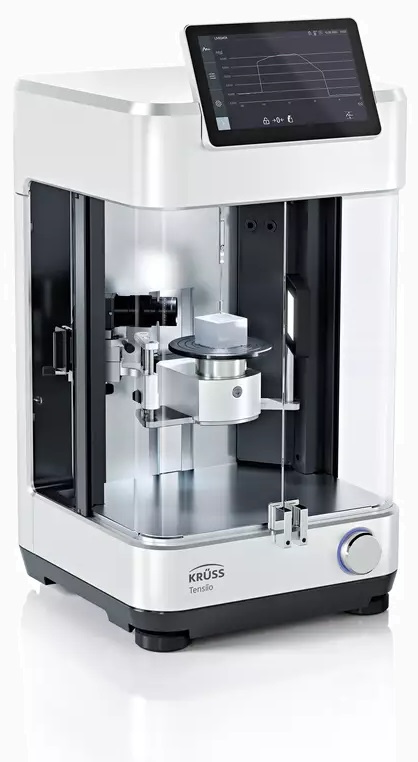
Measuring Results
☑️ Surface tension of a liquid
☑️ Interfacial tension between two liquids
☑️ Critical micelle concentration (CMC) of a surfactant and calculation of excess concentration and surface area per molecule
☑️ Advancing and receding contact angle of a solid body
☑️ Surface free energy of a solid
☑️ Work of adhesion, interfacial tension, and spreading coefficient between a solid and a liquid
☑️ Contact angle of a powder
☑️ Density of a liquid
☑️ Density of a solid
☑️ Sedimentation speed of a dispersion
☑️ Penetration resistance of a sediment
☑️ Sample temperature
➡️ As fast or as slow as you need it – but always convenient
The Tensíío sample stage moves quickly to save time or slowly with minimal vibration for high-viscosity liquids. Its spacious chamber, built-in stirrer, and temperature control make measurement preparation easy. The large touch display simplifies operation and eliminates the need for extra controls.
➡️ Have full control over the temperature
With an optional software-controlled temperature jacket, the Tensíío can maintain or vary the sample temperature between -15 and 140 °C. This feature supports reproducibility, thermal simulations, and complete temperature ramps via the ADVANCE software.
➡️ Use the versatility of 15 methods (and growing)
The device offers 15 automated methods (more coming) for analyzing surface and interfacial tension, wettability, and properties of liquids, solids, powders, and fibers. An optional high-resolution camera allows for optical adhesion analysis and custom method creation using the ADVANCE automation programming.

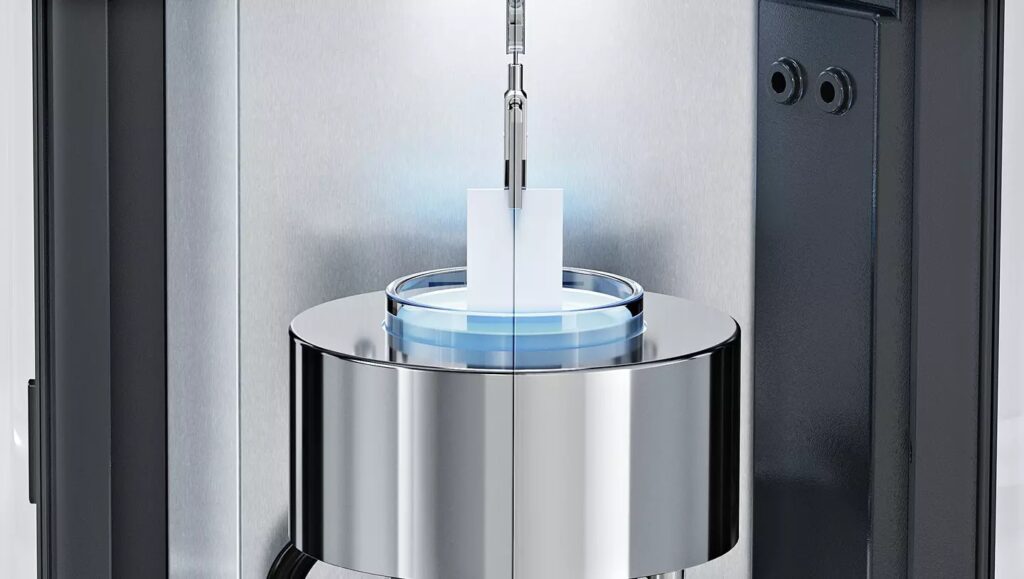
➡️ Tensiometry becomes colorful
The sample chamber illumination makes preparation easier, and uniquely, the tensiometer signals if the measurement result falls within set limits using green or red light. This tri-color illumination is integrated into the automated measurement sequence to enhance usability.
➡️ The tensiometer that grows with your tasks
Tensíío features a high-resolution force sensor, accurate height detection, and many methods, but it’s also customizable to your needs and budget. Whether you require moderate force precision or no height sensor at all, there are countless options to tailor the instrument, with the possibility to upgrade as your tasks expand.
➡️ Made by users for users
Designed with user feedback, Tensíío includes small but important details for maximum convenience: a removable bottom plate for easy cleaning, an electronic leveling assistant, removable side doors for sample chamber access, and optional ionizer to remove static electricity. These features ensure a positive user experience.
